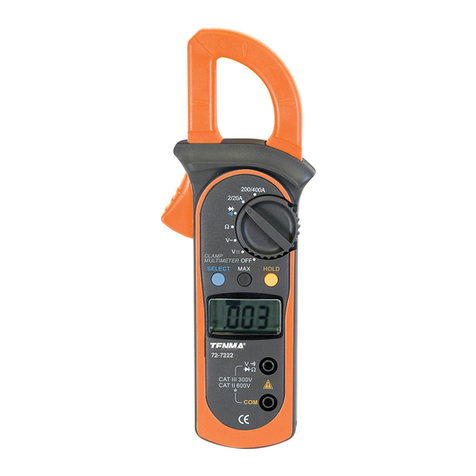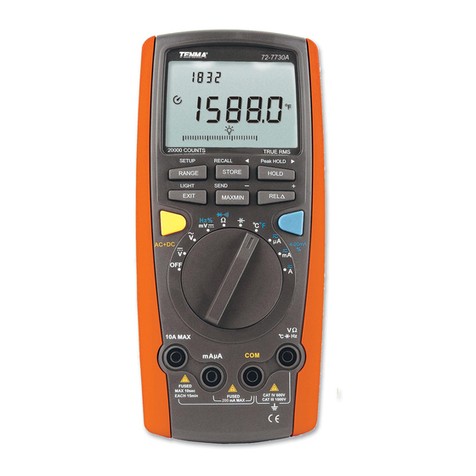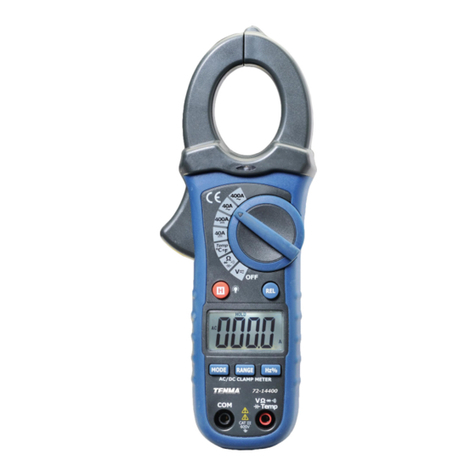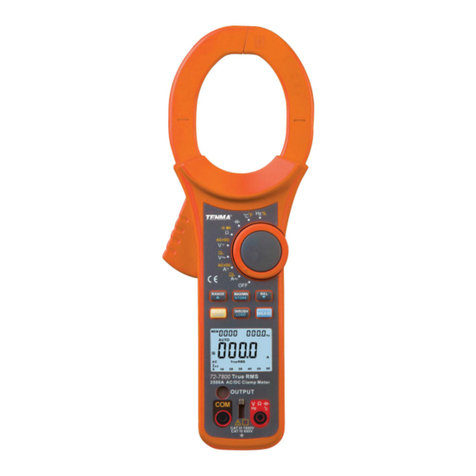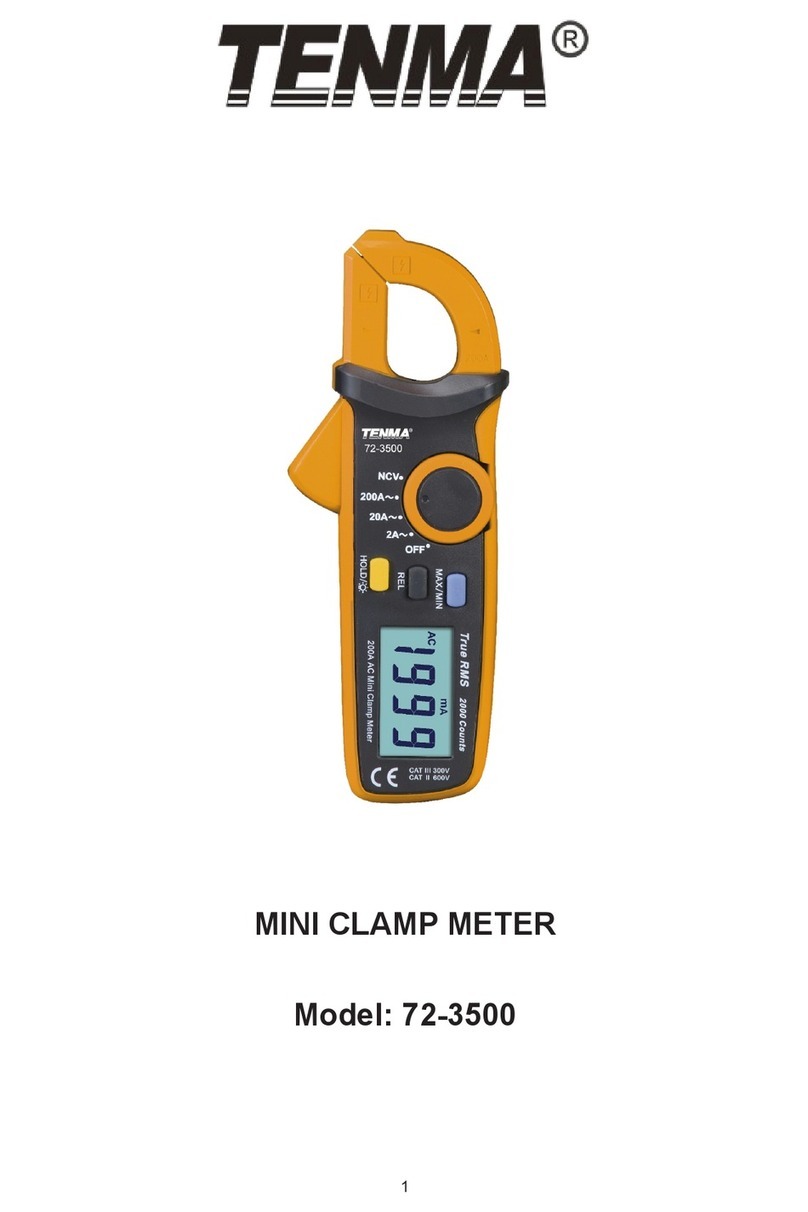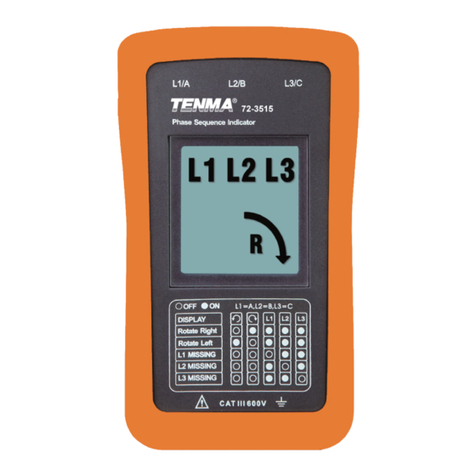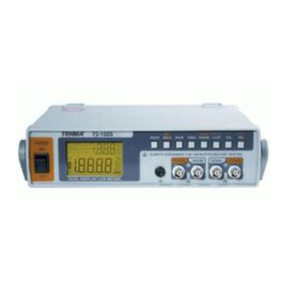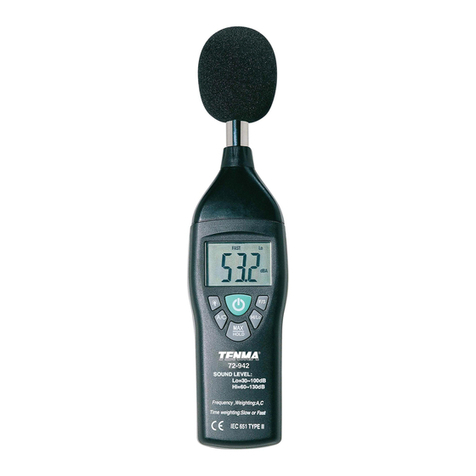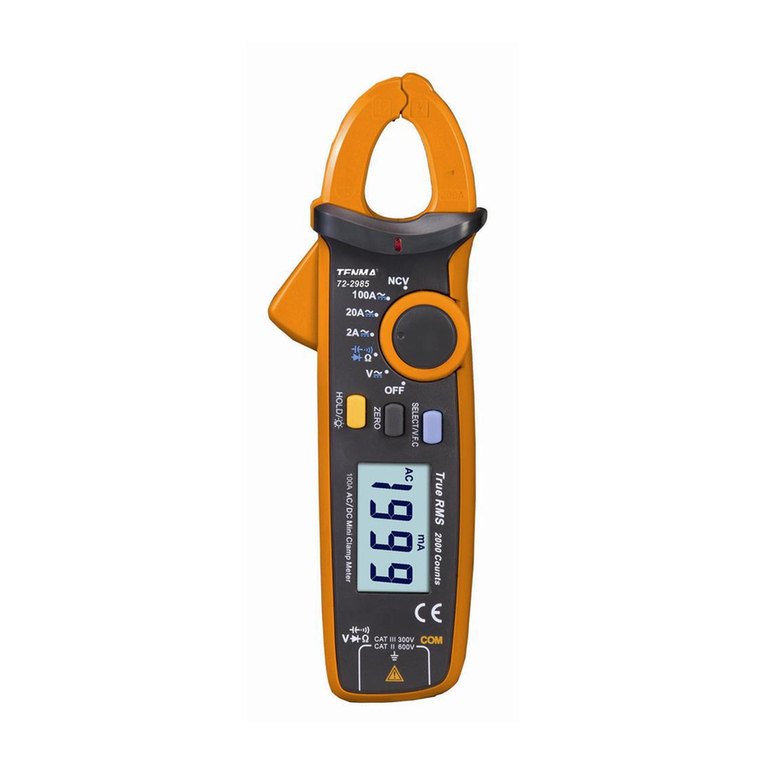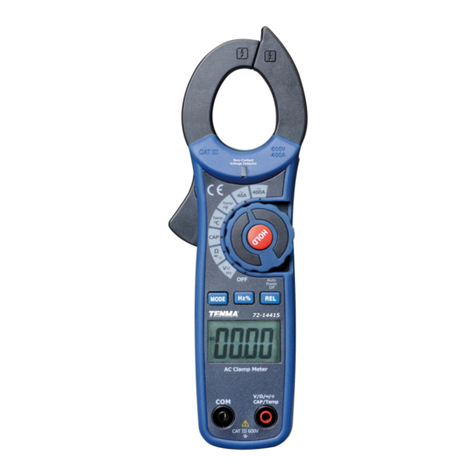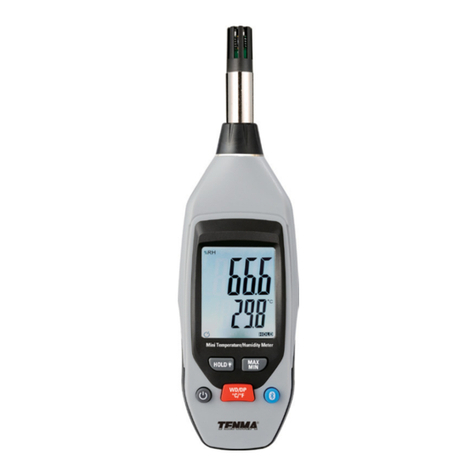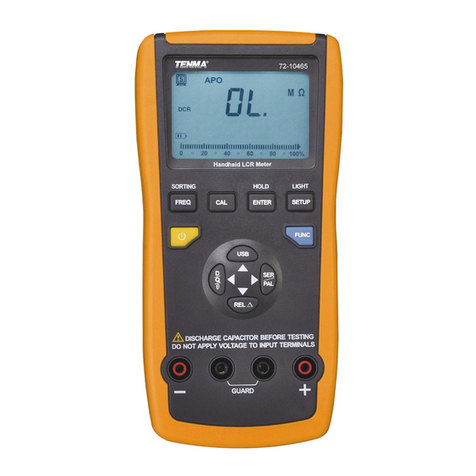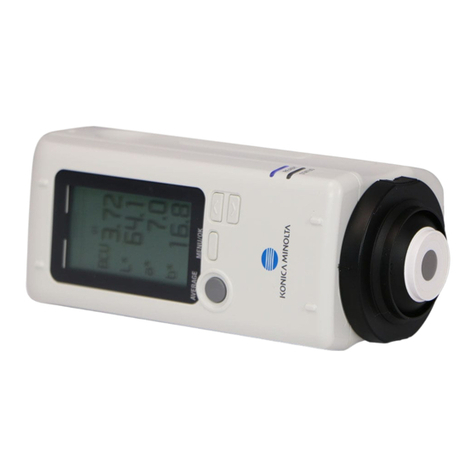
6
OPERATION - AUTOMATIC MEASUREMENT
• Once the meter is switched on, it defaults to AUTO LCR mode, at the frequency of
1kHz.
• In auto mode, the meter can automatically check the impedance characteristics of
a tested object and then select L, C or R main parameter, its associated secondary
parameter and the correct serial/parallel mode accordingly.
• Correspondence between the main and secondary parameter under auto mode:
- Capacitance (C) - Dissipation (D)
- Inductance (L) - Quality Factor (Q)
- Resistance (R) - Phase Angle (θ)
• Under auto measurement mode, serial/parallel mode is determined based on the
impedance of the tested object.
•The parallel mode is selected if the impedance is greater than 10kΩ.
•The serial mode is selected if the impedance is less than 10kΩ.
DATA HOLD
• Press and hold the HOLD button to freeze the data during measurement.
• Press again to exit and return to normal measurement.
MEASUREMENT PARAMETER UNDER L/C/R MODE
• Select the corresponding parameters under manual L/C/R mode.
Selection of main parameter:
• Default status is AUTO LCR once powered on.
• Select “FUNC” to select parameters of:
“AUTO LCR → AUTO L → AUTO C → AUTO R → DCR → AUTO LCR”.
Selection of secondary parameter:
• After a main parameter has been selected, press SER/PAL to switch between
serial and parallel mode,
• Press D/Q/θ to select “D”, “Q”, “θ”, “ESR” (“ESR” will show if under serial mode
and likewise “Rp” if parallel mode is selected).
• Under “AUTO R” or “AUTO DCR”, the secondary parameter will be negligible.
Notes:
•When measuring capacitance <5pF under AUTO LCR mode, “Rᵖ” will show on the
secondary display instead of Dissipation factor (D).
• Some secondary parameters will not show on the LCD even if you have accessed
“AUTO R”, “AUTO DCR” or “AUTO LCR” mode.
MEASUREMENT FREQUENCY
•This model can provide ve frequency testing points:
100Hz/120Hz/1kHz/10kHz/100kHz.
• Default frequency is 1kHz, although the user can press FREQ to select:
“1kHZ → 10kHz → 100kHz → 100Hz → 120Hz → 1kHz”.
Note: DC impedance is measured under “AUTO DCR” mode and measurement
frequency can be neglected.

